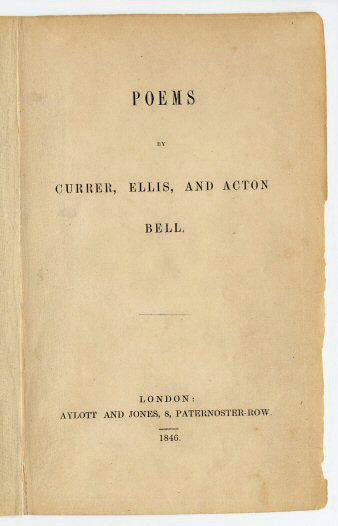2.8.4: Overview of Wuthering Heights
- Page ID
- 190032
\( \newcommand{\vecs}[1]{\overset { \scriptstyle \rightharpoonup} {\mathbf{#1}} } \)
\( \newcommand{\vecd}[1]{\overset{-\!-\!\rightharpoonup}{\vphantom{a}\smash {#1}}} \)
\( \newcommand{\id}{\mathrm{id}}\) \( \newcommand{\Span}{\mathrm{span}}\)
( \newcommand{\kernel}{\mathrm{null}\,}\) \( \newcommand{\range}{\mathrm{range}\,}\)
\( \newcommand{\RealPart}{\mathrm{Re}}\) \( \newcommand{\ImaginaryPart}{\mathrm{Im}}\)
\( \newcommand{\Argument}{\mathrm{Arg}}\) \( \newcommand{\norm}[1]{\| #1 \|}\)
\( \newcommand{\inner}[2]{\langle #1, #2 \rangle}\)
\( \newcommand{\Span}{\mathrm{span}}\)
\( \newcommand{\id}{\mathrm{id}}\)
\( \newcommand{\Span}{\mathrm{span}}\)
\( \newcommand{\kernel}{\mathrm{null}\,}\)
\( \newcommand{\range}{\mathrm{range}\,}\)
\( \newcommand{\RealPart}{\mathrm{Re}}\)
\( \newcommand{\ImaginaryPart}{\mathrm{Im}}\)
\( \newcommand{\Argument}{\mathrm{Arg}}\)
\( \newcommand{\norm}[1]{\| #1 \|}\)
\( \newcommand{\inner}[2]{\langle #1, #2 \rangle}\)
\( \newcommand{\Span}{\mathrm{span}}\) \( \newcommand{\AA}{\unicode[.8,0]{x212B}}\)
\( \newcommand{\vectorA}[1]{\vec{#1}} % arrow\)
\( \newcommand{\vectorAt}[1]{\vec{\text{#1}}} % arrow\)
\( \newcommand{\vectorB}[1]{\overset { \scriptstyle \rightharpoonup} {\mathbf{#1}} } \)
\( \newcommand{\vectorC}[1]{\textbf{#1}} \)
\( \newcommand{\vectorD}[1]{\overrightarrow{#1}} \)
\( \newcommand{\vectorDt}[1]{\overrightarrow{\text{#1}}} \)
\( \newcommand{\vectE}[1]{\overset{-\!-\!\rightharpoonup}{\vphantom{a}\smash{\mathbf {#1}}}} \)
\( \newcommand{\vecs}[1]{\overset { \scriptstyle \rightharpoonup} {\mathbf{#1}} } \)
\( \newcommand{\vecd}[1]{\overset{-\!-\!\rightharpoonup}{\vphantom{a}\smash {#1}}} \)
- Wuthering Heights. Electronic Text Center, University of Virginia Library.
- Wuthering Heights by Emily Brontë. Project Gutenberg.
- Wuthering Heights and Agnes Grey. The Haworth Edition. New York and London. Harper & Brothers Publishers. 1900. Hathi Trust Digital Library.
Wuthering Heights (1846)
A novel, according to Holman and Harmon’s standard definition is an “extended fictional prose narrative.” A novel’s components include character, plot, structure, setting, and theme.

An 1846 edition of Poems showing the use of pen names, Currer, Ellis, and Acton Bell.

Emily Brontë’s drawing of herself and Anne writing at a table in the Bronté parsonage in Haworth. This sketch is on display in the Brontë Parsonage Museum in Haworth.
As in most novels, in Wuthering Heights character, plot, and structure are tightly interwoven; one element drives the others. Particularly significant in Wuthering Heights is setting, which Brontë uses to reflect character.
- Character: While contemporary audiences tend to read Wuthering Heights with a sympathetic view of Heathcliff and Catherine, Victorian audiences would have agreed that Edgar was the appropriate choice of a husband for Catherine. We may think that couples should follow their hearts, but a Victorian audience, particularly an upper or middle class audience, would have believed that Catherine had a duty to marry her social equal—Edgar. The conflict within Catherine as she feels torn between Heathcliff and Edgar is a focal point of the novel. Her death marks the transition between the two parts of the story. Of course, Wuthering Heights is largely Heathcliff’s story; his desire for revenge drives the plot.
- Plot: The main story is told as a flashback, the insertion of an event from earlier in the natural chronology that interrupts the narrative. The story opens with the arrival of Lockwood at Wuthering Heights. After his nightmarish encounter with the apparition of Catherine, Nelly Dean begins to tell Lockwood the story of the Earnshaws and the Lintons. Most of the book, then, is her narration of events that have already happened. The final chapters return to the novel’s present, the time of Lockwood, as the conflicts are resolved.
- Structure: The structure of Wuthering Heights is built on the three generations of characters in the story: the older generation (who set in motion the conflicts); their children (who comprise the conflicts of the novel); and the youngest generation (who resolve the conflicts). Through these three layers of characters runs a connecting thread in the character of Heathcliff. Providing a framework for this structure are the narrations of Nelly and Lockwood.
- Setting: The characteristics of the two families, the Earnshaws and the Lintons, are reflected in their homes, Wuthering Heights and Thrushcross Grange. Even the weather is used to mirror the emotions of the characters.
A structural diagram of Wuthering Heights.
Video Clip 3
Emily Brontë and the Yorkshire Moors
View a video mini-lecture about Emily Bronte and the Yorkshire Moors.



